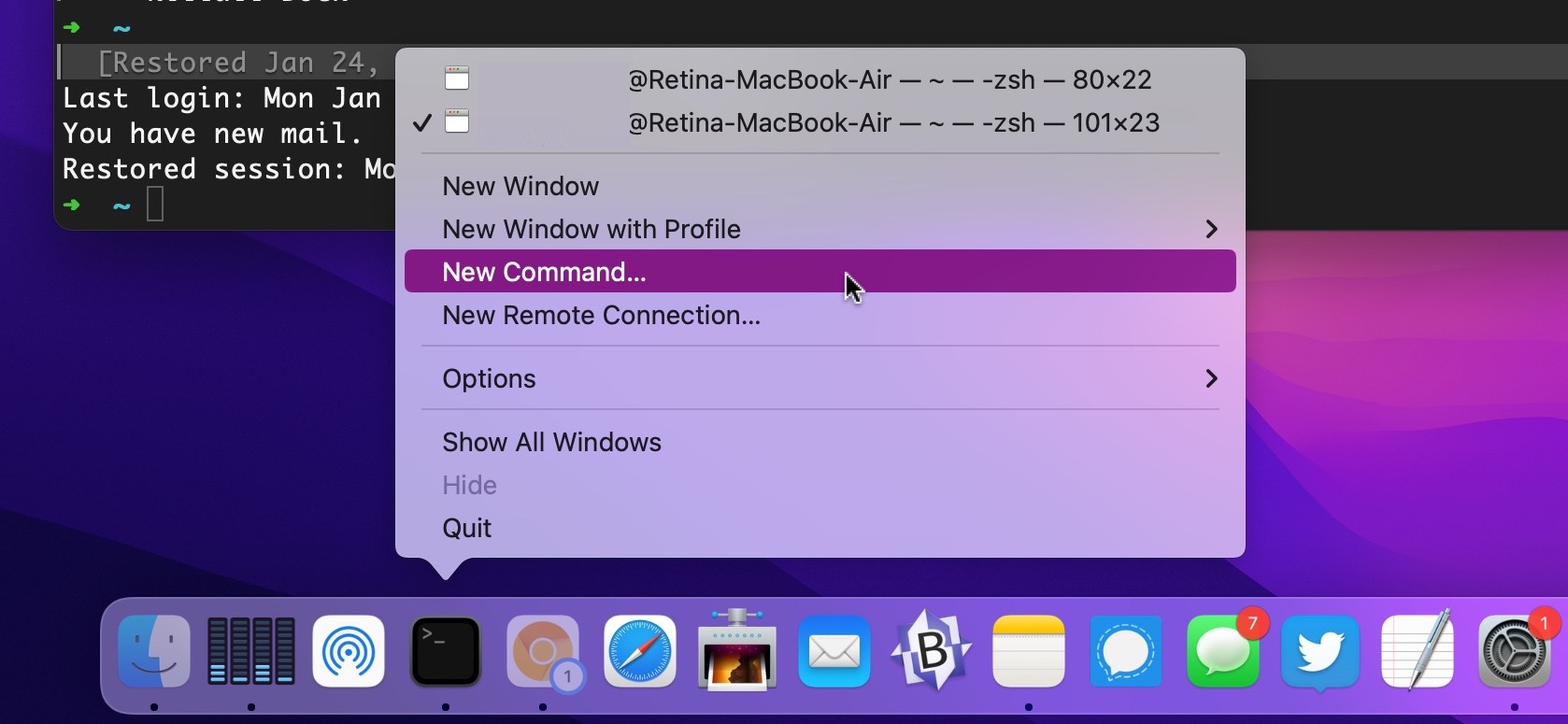
- Run command on mac terminal how to#
- Run command on mac terminal manual#
- Run command on mac terminal full#
Saved persistent state is lost, except for Untitled documents. F Opens the application "fresh," that is, without restoring windows. Also useful for piping output to open and having it open in the default text editor. End input by sending EOF character (type Control-D). f Reads input from standard input and opens the results in the default text editor. t Causes the file to be opened with the default text editor, as determined via LaunchServices e Causes the file to be opened with /Applications/TextEdit Specifies the bundle identifier for the application to use when opening the file Specifies the application to use for opening the file

Run command on mac terminal full#
Opened applications inherit environment variables just as if you had launched the application directly through its full path. For example, the following command would open all Word files in the current working directory: You can specify one or more file names (or pathnames), which are interpreted relative to the shell or Terminal window's current working directory. If the file is in the form of a URL, the file will be opened as a URL. If no application name is specified, the default application as determined via LaunchServices is used to open the specified files.

The open command opens a file (or a directory or URL), just as if you had double-clicked the file's icon. Some other useful variations and arguments are in the examples below. And feel free to jump right to the examples below to whet your appetite.įor this limited how-to, one interesting way to use the open command in this context is to use the option. I've printed most of the man page for the open command here for your perusal, but I'm not going to explore every argument.
Run command on mac terminal manual#
Below is the manual page ("man" for short), shown by typing: man open The BSD UNIX command we'll be using is open. The terminal app is in the Utilities folder-which is found the Applications folder.
Run command on mac terminal how to#
See, for example, " How to Find & Recover Missing Hard Drive Space." In that case, you must bypass the open command and drill into the Package Contents to run the app with sudo and admin privileges.

The Finder acts up, a terminal window is already open, and you'd like to be able to launch a GUI app that might help you diagnose the problem.However, it's so darn cool and charming that one just aches to use it at any opportunity.Īctually, upon reflection, there are some useful scenarios for this technique. In my OS X career, I've only used this trick a handful of times. In this how-to I'll show you how to launch an OS X app from the command line with the open command.įirst off, I will admit this technique is fairly geeky. But with OS X and its Darwin core, there's often an elegant integration between the two.

In some flavors of Unix, you feel as if you've been cast into an alternate universe when you open a terminal window and work on the command line.


 0 kommentar(er)
0 kommentar(er)
